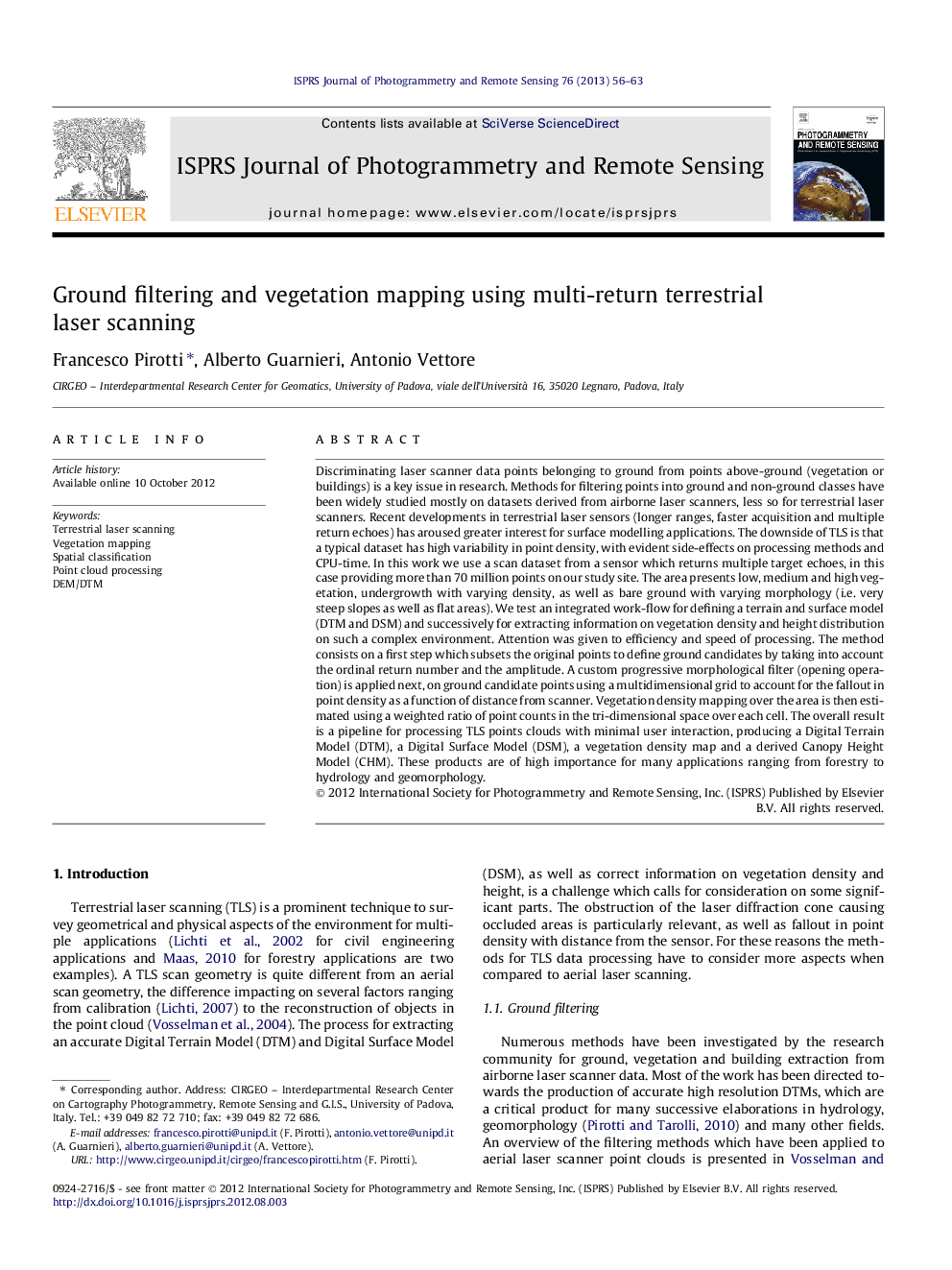| Article ID | Journal | Published Year | Pages | File Type |
|---|---|---|---|---|
| 556083 | ISPRS Journal of Photogrammetry and Remote Sensing | 2013 | 8 Pages |
Discriminating laser scanner data points belonging to ground from points above-ground (vegetation or buildings) is a key issue in research. Methods for filtering points into ground and non-ground classes have been widely studied mostly on datasets derived from airborne laser scanners, less so for terrestrial laser scanners. Recent developments in terrestrial laser sensors (longer ranges, faster acquisition and multiple return echoes) has aroused greater interest for surface modelling applications. The downside of TLS is that a typical dataset has high variability in point density, with evident side-effects on processing methods and CPU-time. In this work we use a scan dataset from a sensor which returns multiple target echoes, in this case providing more than 70 million points on our study site. The area presents low, medium and high vegetation, undergrowth with varying density, as well as bare ground with varying morphology (i.e. very steep slopes as well as flat areas). We test an integrated work-flow for defining a terrain and surface model (DTM and DSM) and successively for extracting information on vegetation density and height distribution on such a complex environment. Attention was given to efficiency and speed of processing. The method consists on a first step which subsets the original points to define ground candidates by taking into account the ordinal return number and the amplitude. A custom progressive morphological filter (opening operation) is applied next, on ground candidate points using a multidimensional grid to account for the fallout in point density as a function of distance from scanner. Vegetation density mapping over the area is then estimated using a weighted ratio of point counts in the tri-dimensional space over each cell. The overall result is a pipeline for processing TLS points clouds with minimal user interaction, producing a Digital Terrain Model (DTM), a Digital Surface Model (DSM), a vegetation density map and a derived Canopy Height Model (CHM). These products are of high importance for many applications ranging from forestry to hydrology and geomorphology.
